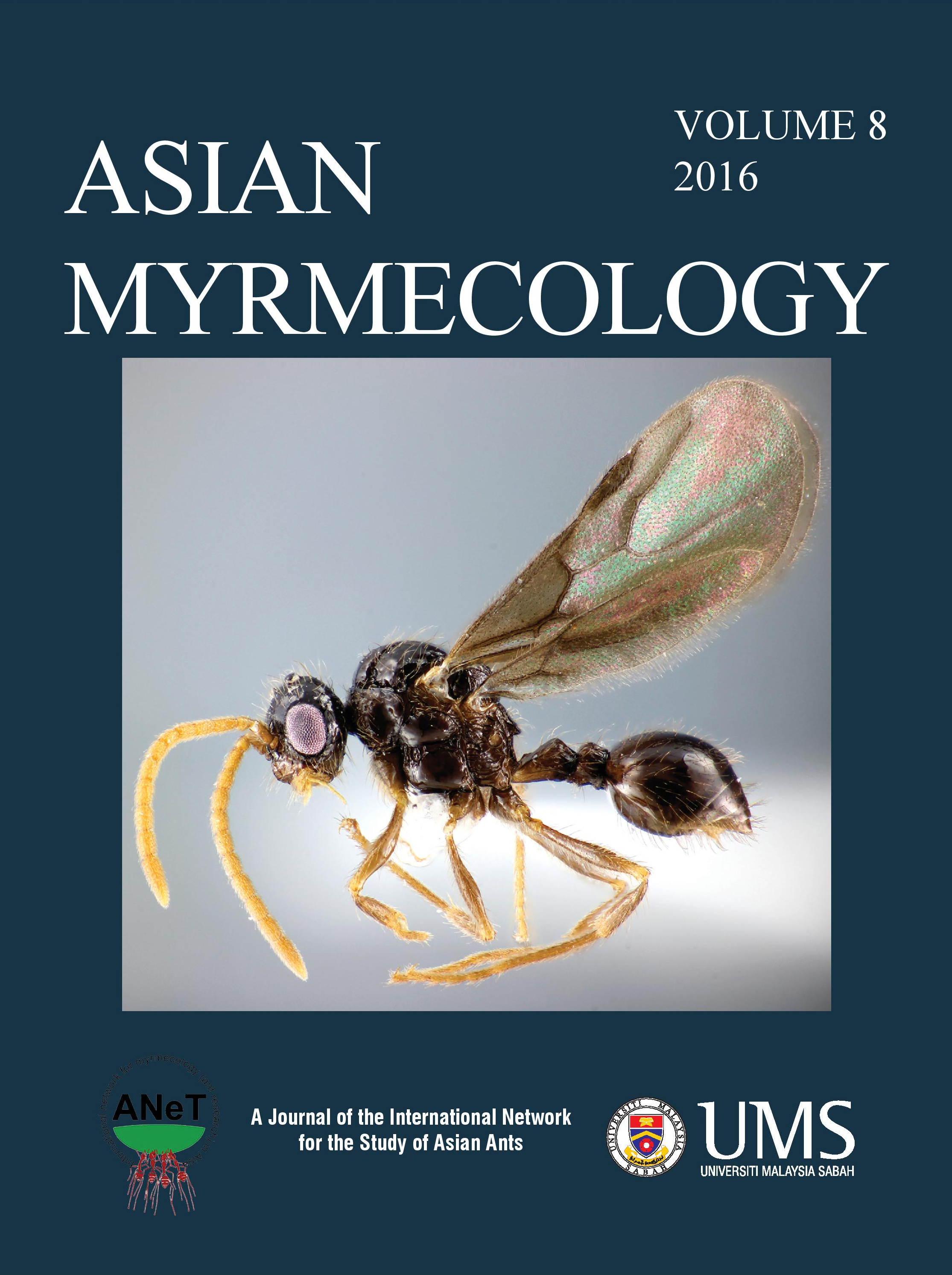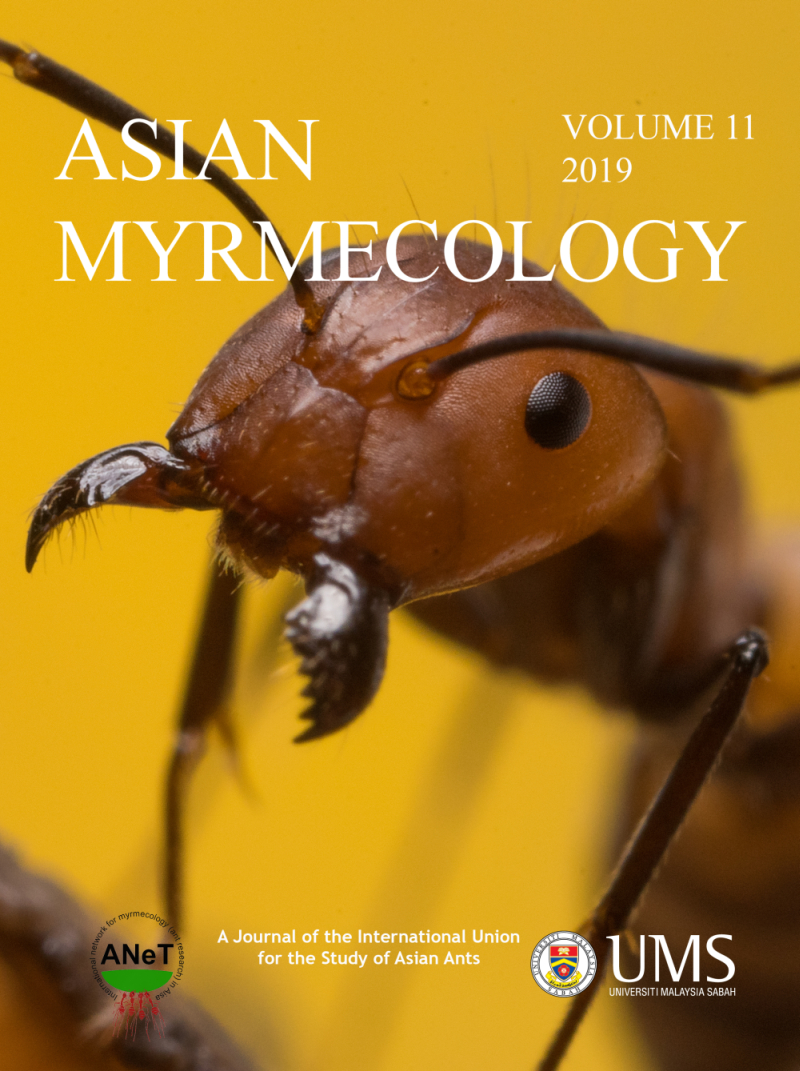ASIAN
MYRMECOLOGY
Image: François Brassard
Ecology and Distribution
Asian Myrmecology, Volume 8, pages 65-79, published December 2016
DOI: 10.20362/am.008023
article first published online: 22/September/2016
Ants as bioindicators of ecosystem health in Shivalik Mountains of Himalayas: assessment of species diversity and invasive species
HIMENDER BHARTI1, MEENAKSHI BHARTI1 & MARTIN PFEIFFER 2, 3*
Abstract:
The Northern-Indian Shivalik mountain range has recently come under strong anthropogenic pressure. Ants were used as bioindicators to assess ecosystem health of the area. We measured diversity, community patterns, species composition and the influence of invasive species of Formicidae by collecting at 75 sites from 44 locations in three habitats: primary forest (PF), secondary forest (SF) and non-forest areas (NF) using six collection techniques. We obtained the most comprehensive dataset compiled for Indian ants to date (sample coverage 94 % to 97 %) and sampled 31,487 ant specimens, representing 181 species from 59 genera and 9 ant families. Thirty of the 59 genera were represented by a single species, 12 genera by more than five species and 26 species were new to science. Species richness differed significantly between habitats, with 151 in SF, 120 in PF and 110 in NF. Species richness rose with altitude and was influenced by precipitation, northern latitude and eastern longitude. As demonstrated by redundancy analysis and beta diversity, habitats also differed in species composition. Nineteen invasive/tramp species, comprising ca. 13% of total abundance, were distributed among the three habitats (including PF). Our findings point towards a disrupted, degraded ecosystem with high anthropogenic impact and reduced ecosystem health, even in the primary and protected forest areas. Invasive species pose a serious threat to the native species of Himalaya. At present the ant invasions are limited to lower mountain ranges, but with increases in global temperatures invasive species will soon spread to Himalayan highlands.
Keywords:
alien fauna, biodiversity, ecosystem distress syndrome, Formicidae, habitat degradation, India, species inventory, tramp species
Get PDF (2046K):
1Department of Zoology and Environmental Sciences, Punjabi University, Patiala, Punjab, India
2Biogeography, University of Bayreuth, 95440 Bayreuth, Germany
3Department of Ecology, School of Arts and Sciences, National University of Mongolia, Baga Toiruu 48, Ulaanbaatar, Mongolia
*Corresponding author: martin.pfeiffer@uni-bayreuth.de



